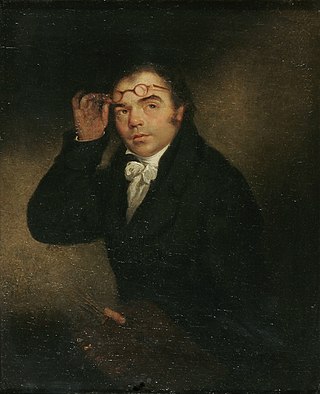
John Crome, once known as Old Crome to distinguish him from his artist son John Berney Crome, was an English landscape painter of the Romantic era, one of the principal artists and founding members of the Norwich School of painters. He lived in the English city of Norwich for all his life. Most of his works are of Norfolk landscapes.

John Sell Cotman was an English marine and landscape painter, etcher, illustrator, and a leading member of the Norwich School of painters.
The Norwich School of painters was the first provincial art movement established in Britain, active in the early 19th century. Artists of the school were inspired by the natural environment of the Norfolk landscape and owed some influence to the work of landscape painters of the Dutch Golden Age such as Hobbema and Ruisdael.

Joseph Stannard was an English marine, landscape and portrait painter. He was a talented and prominent member of the Norwich School of painters.

James Stark was an English landscape painter. A leading member of the Norwich School of painters, he was elected vice-president of the Norwich Society of Artists in 1828 and became their president in 1829. He had wealthy patrons and was consistently praised by the Norfolk press for his successful London career.

George Vincent was an English landscape painter who produced watercolours, etchings and oil paintings. He is considered by art historians to be one of the most talented of the Norwich School of painters, a group of artists connected by location and personal and professional relationships, who were mainly inspired by the Norfolk countryside. Vincent's work was founded on the Dutch school of landscape painting as well as the style of John Crome, also of the Norwich School. The school's reputation outside East Anglia in the 1820s was based largely upon the works of Vincent and his friend James Stark.

Edward Thomas Daniell was an English artist known for his etchings and the landscape paintings he made during an expedition to the Middle East, including Lycia, part of modern-day Turkey. He is associated with the Norwich School of painters, a group of artists connected by location and personal and professional relationships, who were mainly inspired by the Norfolk countryside.

James Sillett was an English still life and landscape artist. He showed himself to be one of the most versatile of the Norwich School of painters: although the great majority of his works were still lifes and landscapes, he was also a drawing master and a miniaturist. His botanical paintings illustrations have been praised for their accuracy and attention to detail. These and his still life paintings are considered to be his best work, with some experts ranking him with William Jackson Hooker, whose illustrations were both accurate and charming. Sillett's own accurate depictions of plants were often used for book illustrations. His paintings often have an academic style, influenced by the masters of the eighteenth century in a way that set him apart from his Norwich contemporaries. He exhibited at the Royal Academy between 1796 and 1837.

Miles Edmund Cotman was an English artist of the Norwich School of painters, the eldest son of John Sell Cotman.
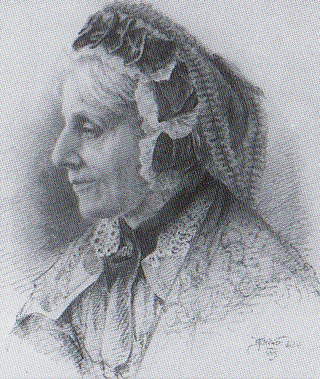
Emily Stannard, who from 1826 called herself Mrs Joseph Stannard, was a British still life painter. She was associated with the Norwich School of painters, Britain's first provincial art movement. Along with her niece Eloise Harriet Stannard, she is considered to be the most accomplished British female still life artist of the 19th century.

John Thirtle was an English watercolour artist and frame-maker. Born in Norwich, where he lived for most of his life, he was a leading member of the Norwich School of painters.
Joseph Clover was an English portrait painter and a member of the Norwich School of painters. He was born in Aylsham, in the English county of Norfolk, one of the twelve children of Thomas and Ann Clover, who owned a drapery business in the town. Few details of his early years are known. He was engaged to be married, but his fiancée, a local girl, died in 1801. He started his career as an engraver but was advised to give it up. Inspired to turn to portrait painting when the artist John Opie painted one of his relatives, he became Opie's pupil, and studied under him for four years. His paintings often use a generous amount of paint, handled freely in a fashion that was characteristic of Opie.

John Middleton was an English artist known for his accomplished watercolour paintings. He was the youngest and the last important member of the Norwich School of painters, which was the first provincial art movement in Britain. As well as being a talented etcher, he produced oil paintings and was an enthusiastic amateur photographer.
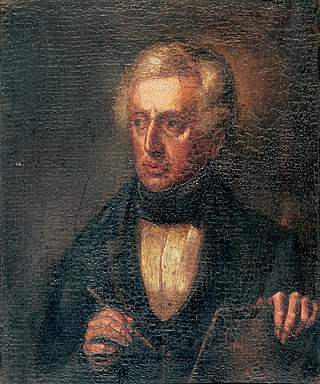
Henry Ninham was an English landscape artist, engraver and heraldic painter. He and his father John Ninham belonged to the Norwich School of painters, a group of artists who all worked or lived in Norwich during all or part of their working lives from around 1800 to 1880. Along with the Norwich School artists John Thirtle and David Hodgson, he was the foremost recorder of Norwich's architectural heritage prior to the invention of photography.
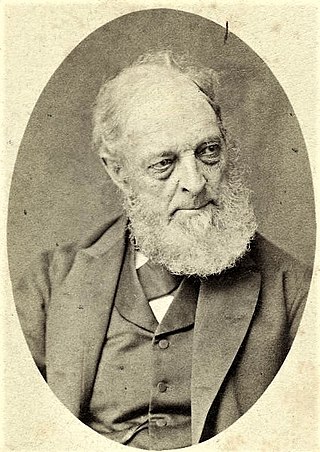
Obadiah Short was an amateur British painter of landscapes. He is associated with the Norwich School of painters, which was the first provincial art movement in Britain. He wrote a detailed account of his childhood memories and produced accurate paintings of Norwich scenes, both of which have provided historians with a record of the city he lived in all his life.
Charles Hodgson was an amateur English landscape painter who was one of the founding members member of the Norwich School of painters. His son was David Hodgson, a notable artist in his own right.
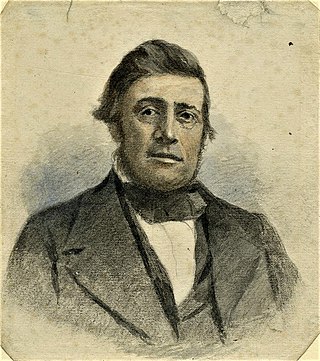
Thomas Lound was an amateur English painter and etcher of landscapes, who specialised in depictions of his home county of Norfolk. He was a member of the Norwich School of painters, and lived in the city of Norwich all his life.

Alfred Priest was an English painter of landscapes and marine artist, and a member of the Norwich School of painters. Born in Norwich, he was educated to follow his father in becoming a pharmacist, but he left home to work at sea, before briefly working as an apprentice surgeon.

David Hodgson was a professional English painter of landscapes and an active member of the Norwich School of painters. He was the son of the amateur artist Charles Hodgson, whom he accompanied on a tour of Wales in 1805, when he was seven. He was taught art by John Crome at Norwich Grammar School.


































